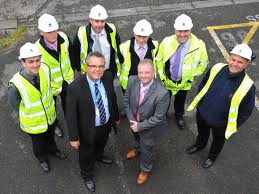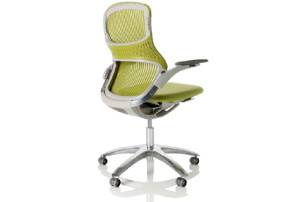January 17, 2013
Changes to Construction and Design Regs delayed

Proposed changes to the Construction and Design Management Regulations (CDM) 2007 have been delayed. The draft changes will now only be presented to the Health and Safety Executive (HSE) Board for consideration in March 2013 at the very earliest. The CDM regulations, apply to all construction work in the UK, comprising construction, alteration, fitting-out, commissioning, renovation, repair, upkeep, redecoration or other maintenance, decommissioning, demolition or dismantling, underwent a review last year, with industry practice found to have a significant influence on how the regulations are implemented. More →




 A new report from Deloitte has highlighted what it believes are the key trends in the market for telecommunications, media and technology as part of its annual TMT Predictions research project. Amongst other things it predicts a slowdown in the uptake of Bring Your Own device polices, the enduring appeal of the laptop, a change in the way we protect our data and devices, and the annual market for smartphones hitting one billion units for the first time as 4G takes off in the UK.
A new report from Deloitte has highlighted what it believes are the key trends in the market for telecommunications, media and technology as part of its annual TMT Predictions research project. Amongst other things it predicts a slowdown in the uptake of Bring Your Own device polices, the enduring appeal of the laptop, a change in the way we protect our data and devices, and the annual market for smartphones hitting one billion units for the first time as 4G takes off in the UK.














January 2, 2013
It’s essential to design flexibility into an office
by Mark Eltringham • Comment, Facilities management, Furniture
The design of offices and the furniture that fills them matters because of what it tells us about how we work, how organisations function and even what is happening in the economy. If you want to know what’s going on, take a look at the places we work and the things with which we surround ourselves and how they change over time.
Because the way we work changes so quickly, buildings need to have flexibility built into them so that they meet our needs today but anticipate what we will need tomorrow. In his book How Buildings Learn, Stewart Brand outlines the process whereby buildings evolve over time to meet the changing needs of their occupants. He describes each building as consisting of six layers, each of which functions on a different timescale. These range from the site itself which has a life cycle measured in centuries, through to the building (decades), interior fit out (years), technology (months), to stuff (days). The effectiveness of a workplace design will depend on how well it resolves the tensions that exist between these layers of the building.
In terms of our workplaces, the ability to respond to change is perhaps the most important facet of an effective design. Creating this level of responsiveness is described in the Facilities Design and Management Handbook by its author Eric Teichholz as ‘the basic driver of the facilities management workload.’
While the nature of work has already changed in many ways, the pace of change has increased even more dramatically over recent years. So the challenge for designers and facilities managers is how best to manage change, keep costs down and provide a flexible home for the organisation. Successful management of change is a good thing, an agent of growth and commercial success. Change handled badly can hamstring an organisation.
The standard answer to the challenge is to build flexibility into the building. At the property management level, this may mean a change in contractual terms, notably in the length of leases, and the provision of lease breaks.
Varying levels of flexibility must also be apparent through the rest of the building in terms of its design and management. If we take an idealised view of the modern office as a flexible, social space for a peripatetic, democratised and technologically literate workforce, the solution lies in an increased use of desk sharing, drop in zones, break out space and other forms of multi-functional workspaces. In many offices, individual workspace is already being rapidly replaced by other types of space, quiet rooms and collaborative areas.
Flexibility must be hardwired into the building at a macro-level. Not only must floorplates be capable of accepting a wide range of work styles and planning models, servicing must be appropriate and anticipate change. That doesn’t mean just in terms of technology and telecoms but also basic human needs such as having enough toilets to deal with changing occupational densities. It also means having a HVAC specification that can deal with the changing needs associated with different numbers of people and different types of equipment.
Elements of the interior that were once considered static are also having to offer far larger degrees of flexibility including, furniture, lighting, storage and partitions. This issue of flexibility has become more important within interior design. Interior elements should now define space, portray corporate identity, comply with legislation and act as an aid in wayfinding. They must do all this and be able to adapt as the organisation changes.
We may not always know exactly what the future holds, but we can work today to be ready for it.